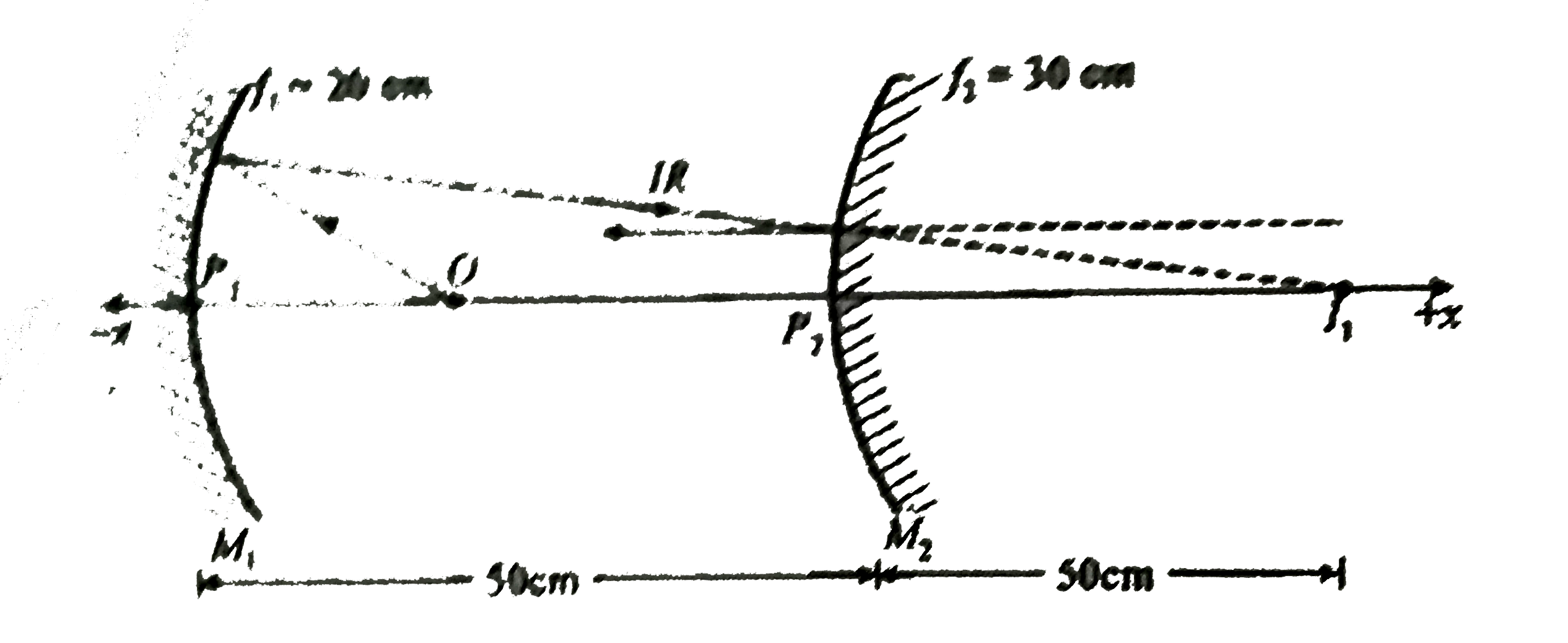Consider two perpendicular mirrors M1 and M2 and a point object O. Taking origin at the point of intersection of the mirrros and the coordinates of object as (x,y), find the position and number of images.

Rays 'a' and 'b' strike mirror M1 only and these rays will form image I1 at (x, –y), such that O and I1 are equidistant from mirror M1. These rays do not form further image because they do not strike any mirror again. Similarly rays 'd' and 'e' strike mirror M2 only and these rays will form image I2 at (–x, y), such that O and I2 are equidistant from mirror M2.
Now consider those rays which strike mirror M2 first and then the mirror M1.
For incident ray 1,2 object is O, and reflected rays 3, 4 from image I2.
Now rays 3, 4 incident on M1 (object is I2) which reflect as rays 5, 6 and form image I21. Rays 5, 6 do not strike any mirror, so image formation stops.

I2 and I21, are equidistant from M1. To summarize see the following figure Now rays 3,4 incident on M1 (object is I2) which reflect as rays 5, 6 and form image I21. Rays 5, 6 do not strike any mirror, so image formation stops.
For rays reflecting first from M1 and from M2, first image I1 at (x, –y) will be formed and this will function as object for mirror M2 and then its image I12 (at (–x, –y)) will be formed. I12 and I21 coincide.
∴ Three images are formed
Topper's Solved these Questions
- GEOMETRICAL OPTICSBook:MOTIONChapter:GEOMETRICAL OPTICSExercise:Exercise - 1 Section A - Plane Mirror
Explore 12 Videos
- GEOMETRICAL OPTICSBook:MOTIONChapter:GEOMETRICAL OPTICSExercise:Exercise - 1 Section B, C, D, E - Mirror formula and Magnification, Velocity in Spherical Mirror, Cutting of Mirrors, Combination of Mirrors, Intensity of light
Explore 10 Videos
- FLUIDBook:MOTIONChapter:FLUIDExercise:Exercise-4 level-II
Explore 5 Videos
- GRAVITATIONBook:MOTIONChapter:GRAVITATIONExercise:Exercise - 4 Section - B Previous Years Problems
Explore 15 Videos
Similar Questions
If the straight line joining the origin and the points of intersection of y=mx+1andx2+y2=1 be perpendicular to each other , then find the value of m.
View SolutionIf the x-coordinate of the point of intersection of the lines x-y+3=0 and mx+2y+1=0 is integer,then the number of possible values of m are
View Solution
Knowledge Check
A concave mirror forms an image I corresponding to a point object O . The equation of the circle intercepted by the xy plane on the mirror is
_S01_051_Q01.png) Ax2+y2=1600Bx2+y2−20x−1600=0Cx2+y2−20x−1500=0Dx2+y2−20x+1500=0
Ax2+y2=1600Bx2+y2−20x−1600=0Cx2+y2−20x−1500=0Dx2+y2−20x+1500=0If the straight lines joining origin to the points of intersection of the line x+y=1 with the curve x2+y2+x−2y−m=0 are perpendicular to each other , then the value of m should be
A−12B0C12D1Consider the point P as the origin and time OP as the x-axis in the situation shown in the figure. Which of the following represents the coordinates of the image of the point object O. (Take OP=20cm)
 A(20cm,0cm)B(10cm,10√3cm)C(−10cm,10√3cm)D(10cm,−10√3cm)
A(20cm,0cm)B(10cm,10√3cm)C(−10cm,10√3cm)D(10cm,−10√3cm)
Two mirrors are inclined by an angle 30∘. An object is placed making 10∘ with the mirror My Find the positions of the first two images formed by each mirror. Find the total number of images.
View SolutionTwo plane mirrors M1 and M2 are inclined at 30° to the vertical. A point object (O) is placed symmetrically between them at a distance of 4 cm from each mirror. Find the distance of the object from the second image formed in mirror M1.

View SolutionFigure shows two spherical mirrors M1 and M2 on same optical axis at a separation of 50 cm. Apoint object O is placed midway between mirrors in optical axis.Find location & nature of its image after two successive reflections first at M1 then at M2

[75 cm]
View SolutionThere is a point object and a plane mirror. If the mirror is moved by 10cm away from the object, find the distance which the image will move.
View SolutionPoint A (0, 1 cm) and B (12 cm, 5 cm) are the coordinates of object and image x-axis is the principal axis of the mirror. The, this object image pair is
View Solution